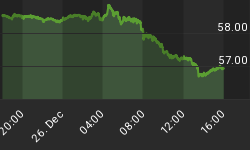The next time someone asks whether you want fries with that, say ‘yes’--it could help stave off a global food crisis.
Belgian potato farmers are facing a surplus of 750,000 tons of potatoes this year that risk being destroyed. That’s prompted authorities there to beg citizens to double up on fries in order to help the industry.
Back in the United States, potato farmers plan to plant fewer spuds this year amid plummeting demand, with some estimates showing potato acres down about 10% while prices have jumped by more than one-third.
But it is not only potato growers that are having problems with the supply and demand, leading to food price increases. In the past few months, with restaurants closed and schools shut down, supply chains are struggling to adapt due to coronavirus restrictions, bottlenecks and general chaos.
Due to the shift of grocery-buying habits that has seen consumers lean more heavily on purchases of non-perishable, packaged goods, fruits and vegetables are being left to rot.
Meanwhile, farmers are destroying beans, squash, onion, cabbage and other crops instead of sending them to market.
In Wisconsin, dairy producers are dumping milk down drains.
In Florida, farmers are leaving tomatoes to rot on the vine.
In California, they're plowing over squash.
In Oregon, they’ve destroyed millions of pounds of onions, because--let's face it--very few of us are making onion rings at home and that small bit used for other cooking isn’t adding up.
According to the US Bureau of Labor Statistics, the price of groceries grew 2.6% in April, the biggest monthly increase since 1974. Prices for meats, poultry and fish saw the biggest price hikes, with eggs jumping more than 16% since March.
The price of cereals and baked goods ticked up a record-breaking 2.9%, while nonalcoholic beverages saw a 2.9% increase. Orange juice futures have also spiked more than 20%.
Some of our county's largest meat suppliers are dealing with coronavirus spreading inside their facilities and have been forced to close.
Pork and beef production is down approximately 35% compared to this time last year and the agricultural lender CoBank recently reported they expect retail pork and beef prices to be up 20% in July compared to 2019 prices.
The jump in food prices stands in contrast to trends in other consumer prices, which all together fell 0.8% in April – the biggest seasonally adjusted downturn since the Great Recession in 2008. In March, the index fell 0.4%.
A nearly 21% decrease in the price of gasoline and a roughly 10% downturn in the overall energy index was the largest contributor to that dip.
As the vast majority of people stayed home, prices fell across just about every category including the apparel, hotels, cars, car insurance, and airfare fell through the floor.
Apparel prices had an extraordinary 4.7% decline, following a drop of 2.0% in March. Prices are now 5.7% below year-ago levels.
There were also huge declines in prices in the travel industry, where hotel prices dropped 8% while airfares dropped 15.2% in April--all led by demand that has dropped more than 50% since the beginning of the year.
By Michael Kern for Safehaven.com
More Top Reads From Safehaven.com:

















